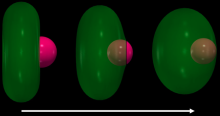Cellular droplets function in more diverse ways than previously known: The ability to fission membranes in cells was previously attributed solely to certain proteins. In a new publication in the renowned journal Nature, an international research team now shows that small cellular droplets, so-called biomolecular condensates, can also split membranes without the help of proteins. Simulations by mathematician Prof Sebastian Aland of the TU Bergakademie Freiberg illustrate how the droplets exert capillary forces on membranes. These forces bend the membrane, whereby the droplet is trapped and ultimately split off. The findings could open up new possibilities for medical treatments in the future, as biomolecular condensates are associated with the development of diseases such as Alzheimer's or cancer.

‘Because the existence of biomolecular condensates has only been known for a good decade, we still know little about how they work,’ says Professor Sebastian Aland from TU Bergakademie Freiberg. In contrast to other cellular components, such as classic organelles, condensates do not have a membrane. They consist of various molecules and form droplets with liquid-like properties that are important for stress reactions and the transmission of signals in cells.
An international research team with researchers from Berlin, London, Beijing, Tokyo, Hong Kong and Freiberg has now investigated how exactly these condensates interact with cell membranes. ‘After all, the droplets often encounter membrane-bound structures in the cells and can attach to them,’ says Prof Roland Knorr from HU Berlin and co-author of the study. ‘The condensate settles on the membrane like a drop of water on a pane of glass. Since membranes, unlike glass, are very soft, the condensates and the membrane can deform each other. If the physical conditions are right, the droplet can be enclosed by the membrane and finally split off.’ Until now, it was assumed that special proteins were required for the final step in cells.
Simulation explains effect of capillary forces
‘We have now been able to show that the condensates can divide membranes even without special proteins, simply through their surface tension and the effect of capillary forces,’ says Aland. To do this, the mathematician at TU Bergakademie Freiberg developed a new simulation technique, which he used to confirm and visualise the results of the international team's experiments. ‘These first simulations of the process confirm that the last step of membrane constriction can also be accomplished by the droplet alone - in fractions of a second.’
Process almost unrecognisable under the microscope
The mechanism that the team investigated in experiments with the plant species Arabidopsis thaliana, first on living and then on artificially generated cells in a test tube, is barely recognisable under the microscope. Only the simulation, which mimics the process rigorously, makes it possible to understand how precisely the condensates fission membranes. ‘We are now working on better simulations and would also like to understand the conditions under which the process takes place. In biomedicine, this could be used to explain disorders of these processes that are associated with diseases such as Alzheimer's or cancer.’
